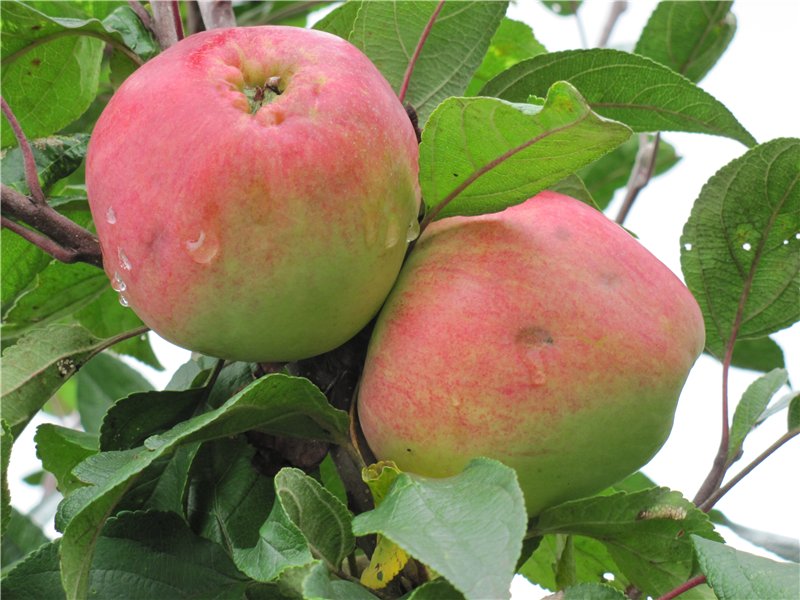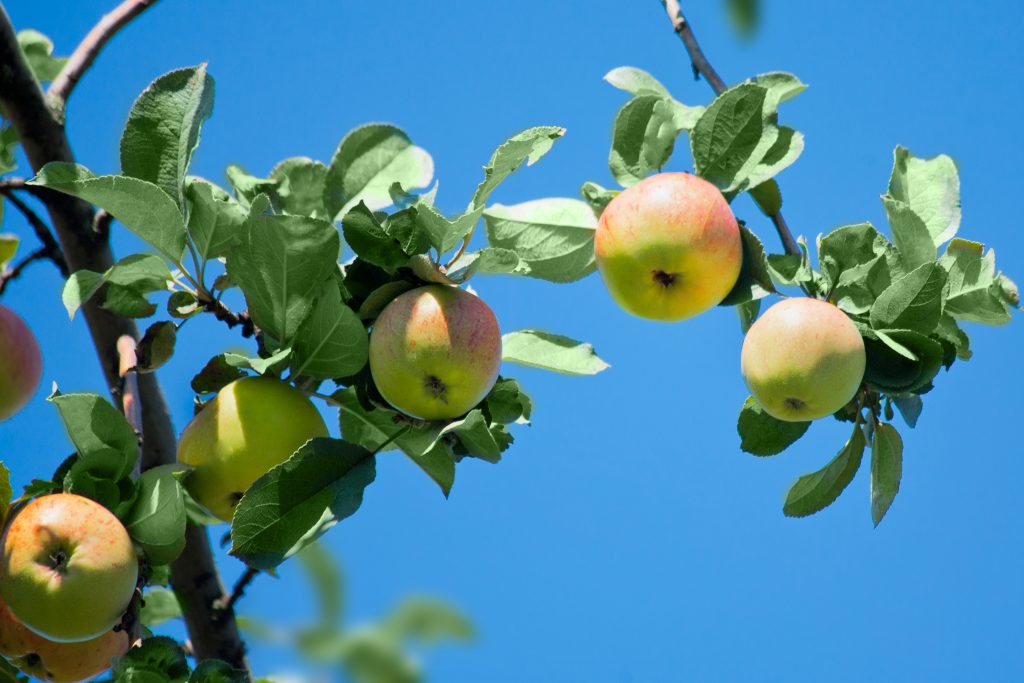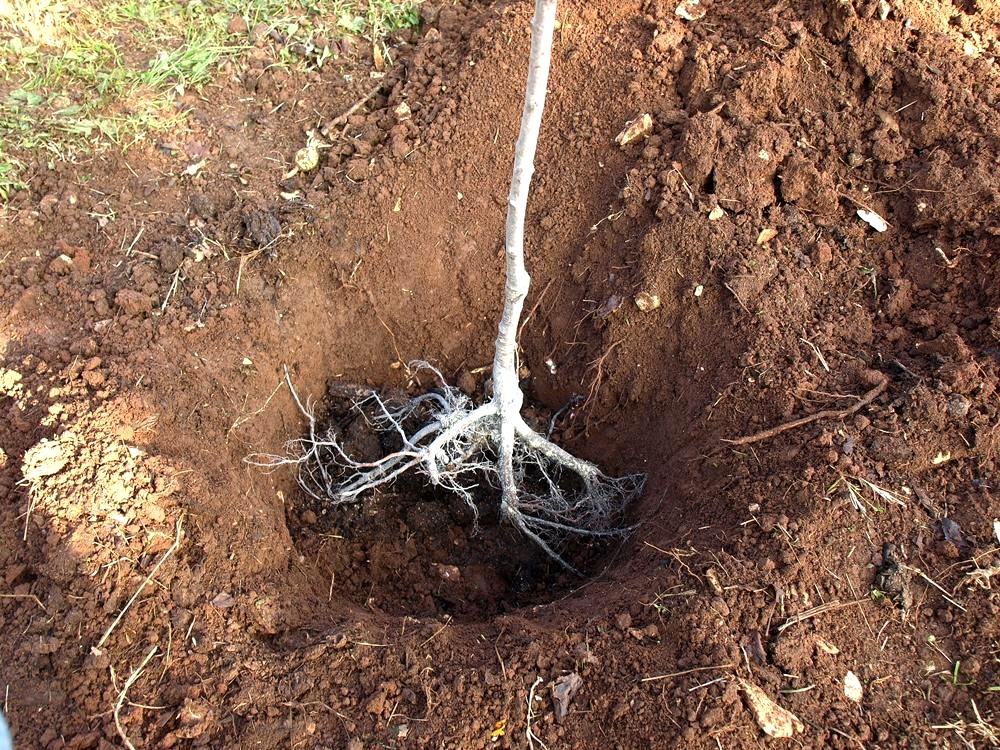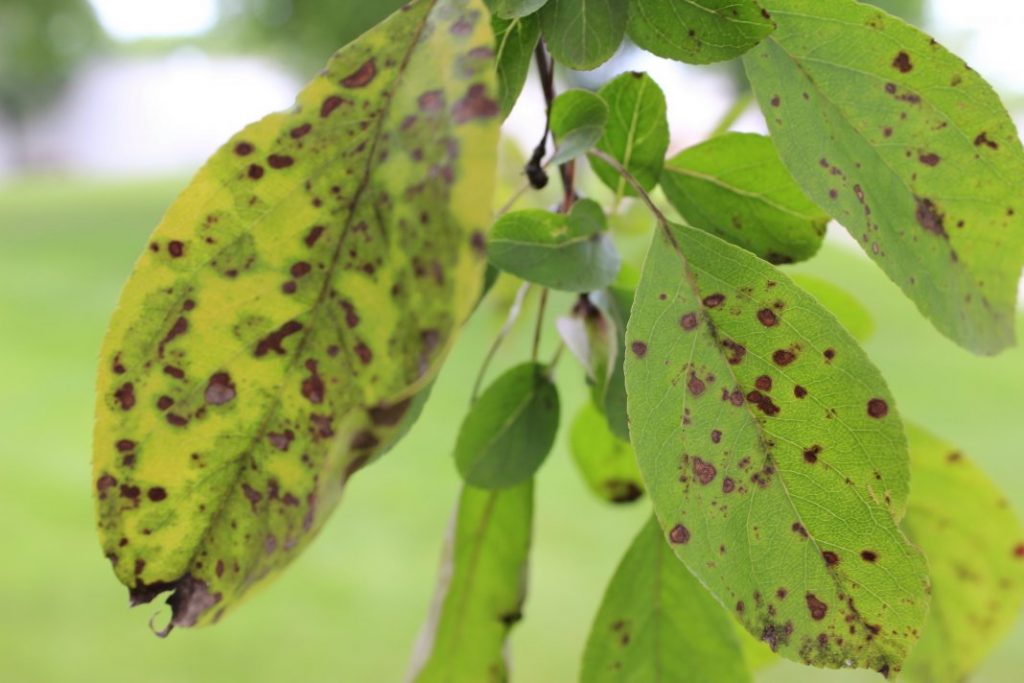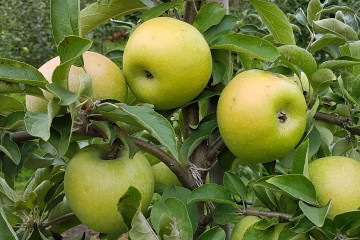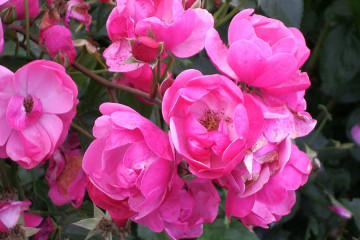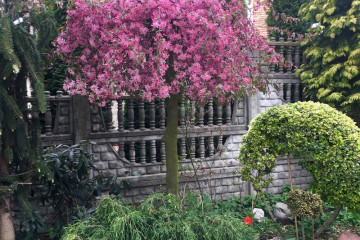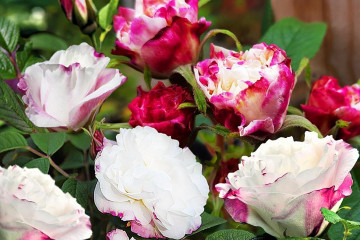Apple tree Medunitsa: variety description and characteristics
Content:
Almost every summer resident or gardener has an apple tree on his site. This is one of the most popular trees, of which there are a large number of varieties. Among them there are the most popular types, which, with proper care, give a very tasty and bountiful harvest. One of these is the Medunitsa apple variety. Due to its high frost resistance and excellent characteristics, it is the best choice for both beginners and experienced gardeners.
Breeding history
The Medunitsa apple tree owes its appearance to the Russian breeder S.I. Isaev. In the 1930s, he set out to develop a variety that would be distinguished by high frost resistance, so that it could be grown in central Russia or the Moscow region. As a result, it was possible to obtain about 40 species of fruit-bearing trees, which, among other things, are resistant to fungal diseases. Among them is Lungwort, which appeared as a result of crossing Welsey and Brown striped.
There are several options for the origin of the name. One of them is the similarity of apple blossoms with flowers of the same name. In addition, there is a version that this is how the scientist called his wife. For his work, SI Isaev was awarded the Stalin Prize. However, most of the varieties, including Medunitsa, were never registered in the Federal Register.
Varieties of varieties
The selected type of rootstock and variety depends on the place of cultivation, and on this - the height of an adult tree, the beginning and duration of fruiting. Among gardeners, several varieties of Medunitsa are especially popular.
Lungwort winter apple tree
The description corresponds to the name of the variety. This variety differs from the rest in that the harvest appears at the end of September. When stored properly, the fruits retain their appearance until the spring of next year.
Apples are high in acids and taste like Medovka.
Columnar
Gardeners use this rootstock when they need to get a bonsai. It is almost impossible to acquire such a plant in a nursery. It must be removed on its own.
Dwarf
Such a Medunitsa reaches a maximum height of 2 m. It is necessary to plant trees at a distance of at least a meter from each other. In the early years, it is recommended to remove all rootstocks from the seedling. This will keep it safe during the winter frosts. The main disadvantage of the variety is the short fruiting period. He is only 12 years old.
Semi-dwarf
With such a stock, you can get a tree up to 5 m high. The first apples appear on it in 4 years. It is necessary to arrange seedlings at a distance of at least 3 m from neighboring plantings.
Seed
One of the best rootstocks. The tree can live up to 90 years and bears fruit for about 50 years. The first crop appears 5-6 years after planting in a permanent place. In order for the crowns to have sufficient access to sunlight, the seedlings must be placed at a distance of 6 m from each other.
Apple tree Medunitsa - variety description
The tree has a spreading crown.Some varieties reach a height of over 7 meters. The crown of an adult plant has a pyramidal shape. The leaves are rounded, light green in color. With proper care, maximum yield is achieved in the first 10 years.
Most often, the fruits of Medunitsa weigh about 100-150 grams. Some varieties may have more. Apples are usually round, but sometimes conical in shape. When fully ripe, the fruit has a yellow color interspersed with red. As for the taste, Medunitsa is considered one of the sweetest summer varieties. The fruits contain about 14% of natural sugar, so they can be consumed even unripe. The apple itself has a juicy and dense pulp, which has a slight honey smell.
Productivity and fruiting
As already mentioned, usually the apple tree begins to bear fruit 4 years after planting. In the next 10-12 years after that, the gardener is guaranteed a bountiful harvest. Summer Medunitsa bears fruit in late summer, and winter - in early autumn. If the tree is properly cared for, then it can be harvested up to 90 kg per year. Apples do not ripen at the same time, but do not fall off quickly.
Drought resistance and frost resistance
In central Russia, Medunitsa is valued by gardeners due to its frost resistance. She easily survives the winter with frosts down to -40 degrees. At the same time, this does not affect the quality of fruiting. In addition, the apple tree has good drought resistance, which is not a very common characteristic in other varieties.
Disease and pest resistance
Even at the initial stage of breeding the variety, the main enemy of all apple trees was scab. And years later, this disease remains the most dangerous for fruit trees. However, thanks to the efforts of Isaev, Medunitsa received a high immunity to fungal diseases. Therefore, she rather successfully resists the defeat of scab. But the development of fungal infections does not stand still and new stamps constantly appear, to which the tree does not have such good immunity. To reduce the risk of injury, it is necessary to carry out annual prophylaxis.
Advantages and disadvantages of the variety
The main advantages of the apple tree include the following qualities:
- After full ripening, the apples remain on the branches and practically do not fall off.
- The fruits can be stored for a long time. However, they do not lose their taste.
- Uneven ripening, due to which the grower regularly receives new ripe fruits.
As for the shortcomings, the most important thing is the short lifespan during which the apple tree yields. The only exception is the seed variety. But in any case, proper care and regular pruning of the crown are necessary for abundant fruiting.
Landing time and technology
The time for planting seedlings depends on the variety and can be done in spring or autumn. In the southern regions, this procedure is performed about 20 days before the onset of winter cold weather. When grown in the central or northern part of the country, it is better to do this when a stable above-zero temperature is reached. It is necessary for the soil to warm up sufficiently.
At the same time, it is recommended to prepare a landing site in half a year. It is necessary to place the seedling in loamy enriched soils. They should additionally provide a drainage layer. This is necessary so that the roots do not become waterlogged. In order for adult apple trees to have enough room to grow, young trees should be placed at a distance of 4 meters from each other.
Agrotechnical cultivation
The procedure is performed in the following sequence:
- The hole is being prepared. In depth and in diameter, it should be about 50 cm.
- The roots of the seedling are straightened and it is neatly placed in the hole.
- A peg is driven in there for tying a tree.
- The excavated soil is mixed with mineral fertilizers and the roots are filled with this mixture.
- The surface of the earth is lightly compacted, and on top is covered with a layer of mulch.
Tree care
Lungwort is considered not a very picky variety, but you need to know the basic rules for caring for it:
- After planting a seedling, it is watered for a month every time the top layer of the earth dries out. Further, humidification is carried out in hot weather every week. One adult tree needs approximately 25 liters of water.
- During the growing season, the tree can be fed with organic fertilizers. At the beginning of summer, urea is used for these purposes, and in the fall - phosphorus-containing additives.
- Two-year-old trees need pruning. It should be done in the spring before the first buds appear. All dry, sore and frozen areas should be removed. In the summer, in order for the crown to grow to the sides, you can pinch young shoots.
Harvesting and storage
Since the fruits ripen unevenly, they have to be harvested within a month. For summer varieties, this procedure is carried out from the end of August to the end of September, and for winter varieties, a month later. Under the right conditions, apples can last from a month to four.
Prevention and control of diseases and pests
Although Lungberry is highly resistant to fungal diseases, it needs regular preventive treatment. With the onset of spring, it is recommended to treat it with a solution of copper sulfate. To get rid of pests, you can use elderberry tincture. Bordeaux liquid will help from rot and scab.
With proper care of Lungwort, it will delight the owner with a plentiful and tasty harvest for at least 10 years.
